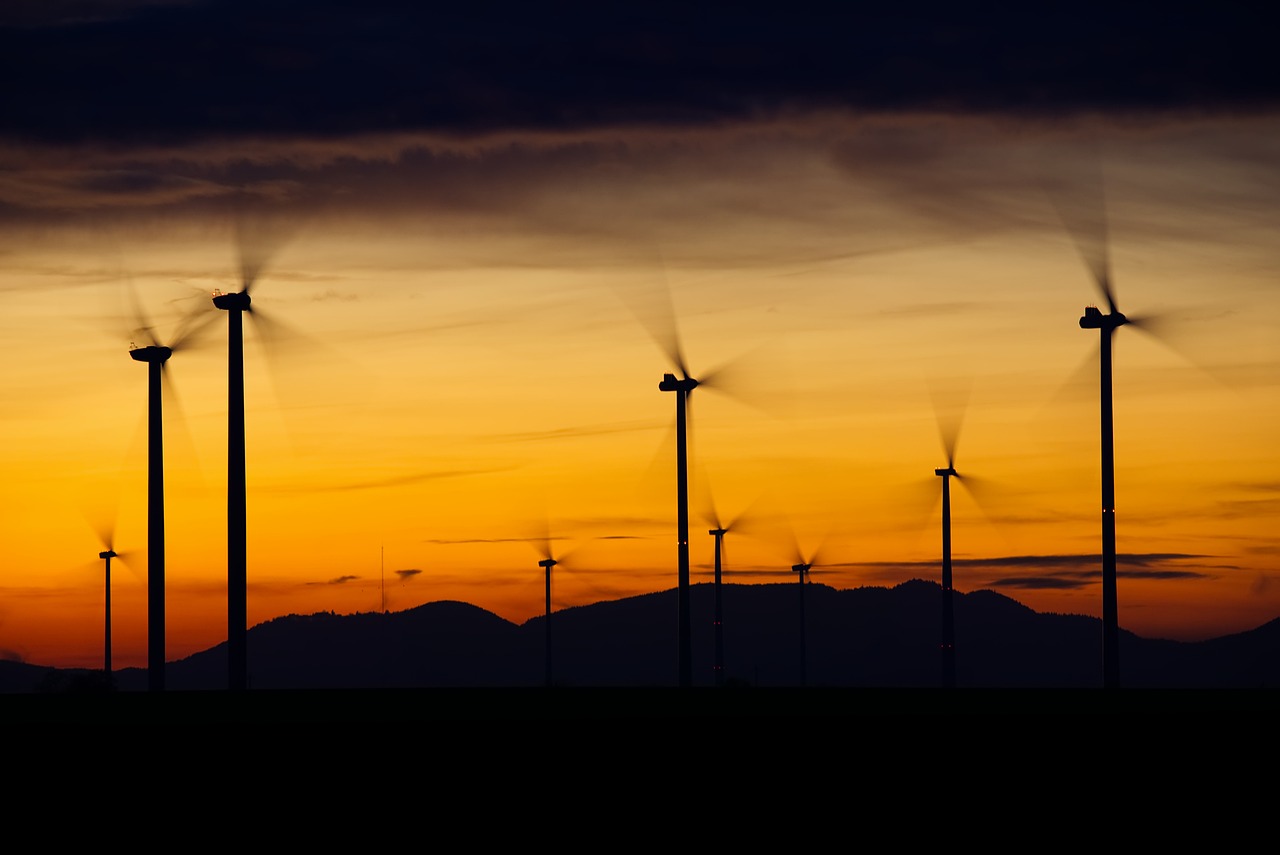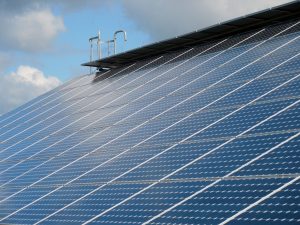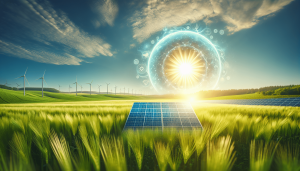In our journey towards a more sustainable future, understanding the various types of renewable energy is key. Renewable energy sources like solar, wind, hydro, geothermal, and biomass provide us with clean and virtually inexhaustible power. Each type of renewable energy has its unique benefits and applications, and together, they form a robust framework for reducing our dependence on fossil fuels. By exploring what these energy sources have to offer, we can better appreciate the innovative technologies driving the green revolution and how they propel us towards a healthier planet. Have you ever wondered about the different types of renewable energy available to us today? As we strive for a more sustainable future, understanding these energy sources becomes crucial. Renewable energy is a game-changer in the fight against climate change, providing alternatives to fossil fuels that are cleaner and often more cost-effective over time. In this article, we’ll delve into various types of renewable energy, explaining how they work and why they matter.

What is Renewable Energy?
Renewable energy comes from natural sources that replenish themselves more quickly than the rate at which they are consumed. Unlike fossil fuels such as coal and oil, which take millions of years to form, renewable energy resources are usually available in a continuous supply. These include sunshine, wind, rain, tides, waves, and geothermal heat.
Why is Renewable Energy Important?
Understanding the importance of renewable energy helps us appreciate why it is necessary to transition away from fossil fuels. Here are some compelling reasons:
- Environmental Impact: Renewable energy sources produce little to no greenhouse gas emissions. This means they are much less disruptive to the planet’s natural systems compared to fossil fuels.
- Sustainability: As the name suggests, renewable resources are not going to run out. They are naturally replenished, making them a long-term solution for our energy needs.
- Economic Benefits: The renewable energy sector creates a multitude of jobs, boosts local economies, and provides stable energy prices over time.
- Energy Independence: By leveraging local renewable energy sources, countries can reduce their dependence on imported fuels, enhancing national security.
Types of Renewable Energy
There are several types of renewable energy sources, each with unique characteristics and applications. Let’s explore each one in detail.
Solar Energy
Solar energy harnesses the power of the sun to generate electricity or heat. This is achieved using technologies like solar panels (photovoltaics), solar thermal collectors, and concentrated solar power systems.
Photovoltaic (PV) Systems
Photovoltaic systems convert sunlight directly into electricity using semiconductor materials. When these materials absorb photons from the sun, they release electrons, creating an electric current.
Pros:
- Zero emissions during operation
- Scalability from small residential setups to large solar farms
- Low operating costs after installation
Cons:
- High initial installation cost
- Intermittency issues (not available at night or during cloudy weather)
- Requires significant space for large-scale installations
Solar Thermal Systems
These systems use mirrors or lenses to concentrate sunlight onto a receiver, which heats up a fluid. The heat from the fluid generates steam that drives a turbine to produce electricity.
Pros:
- Efficient technology for large-scale power generation
- Can include thermal storage to generate electricity even when the sun isn’t shining
Cons:
- High initial cost
- Requires a lot of land and sunlight
Wind Energy
Wind energy captures the power of wind using turbines. The kinetic energy from the wind turns the turbine blades, generating electricity.
Onshore Wind
Onshore wind farms are built on land and are the most common form of wind energy.
Pros:
- Lower costs compared to other renewable sources
- Technologically mature and widely deployed
Cons:
- Visual and noise impact on local communities
- Intermittent and location-dependent
Offshore Wind
Offshore wind farms are built in bodies of water. The wind at sea tends to be stronger and more consistent than on land.
Pros:
- Higher and more consistent wind speeds
- Less visual and noise impact compared to onshore wind farms
Cons:
- More expensive to build and maintain
- Technical challenges associated with marine environments
Hydropower
Hydropower generates electricity by using the energy of flowing water. This is one of the oldest sources of renewable energy, used for centuries to mill grain and perform other tasks.
Large Hydroelectric Dams
These dams store large quantities of water in a reservoir. When released, the flowing water turns turbines to generate electricity.
Pros:
- Provides a large amount of power
- Can store potential energy in the form of water
Cons:
- Environmental impact on aquatic ecosystems
- High initial construction costs and potential displacement of communities
Small Hydropower
Small hydropower systems generate electricity on a smaller scale, often used in local or remote locations.
Pros:
- Minimal environmental impact
- Ideal for remote and rural areas
Cons:
- Limited power output
- Location-specific constraints
Biomass Energy
Biomass energy is generated from organic materials such as plant and animal waste. When these materials are burned, they release energy in the form of heat, which can be used to generate electricity.
Biofuels
Biofuels such as ethanol and biodiesel are derived from crops like corn and soybeans. They can be used as a replacement for gasoline and diesel fuel.
Pros:
- Reduces the need for fossil fuels
- Can be produced from waste products
Cons:
- Potential competition with food production
- Emissions from burning biomass, although lower than fossil fuels
Biogas
Biogas is produced from the anaerobic digestion of organic waste, creating a mixture of methane and carbon dioxide. This gas can be used to generate electricity or heat.
Pros:
- Utilizes waste products
- Reduces methane emissions from landfills
Cons:
- Limited scalability
- Treatment of gas may be required for certain applications
Geothermal Energy
Geothermal energy harnesses heat from beneath the Earth’s surface. This energy can be used for direct heating applications or to generate electricity.
Geothermal Power Plants
These plants extract geothermal heat to produce steam that drives turbines, generating electricity.
Pros:
- Reliable and consistent power supply
- Low environmental impact
Cons:
- Limited to regions with specific geothermal conditions
- High upfront capital costs
Direct Use Applications
Geothermal energy can be used directly for heating homes, greenhouses, and industrial processes.
Pros:
- Highly efficient for heating purposes
- Reduces dependence on conventional heating systems
Cons:
- Region-specific
- May require substantial initial investment
Ocean Energy
Ocean energy leverages the kinetic and thermal properties of the sea to generate electricity. This category includes wave energy, tidal energy, and ocean thermal energy conversion (OTEC).
Wave Energy
Wave energy captures the energy of surface waves to generate electricity.
Pros:
- Predictable energy source
- Minimal environmental impact
Cons:
- High cost and technological challenges
- Limited deployment opportunities
Tidal Energy
Tidal energy harnesses the power of tidal currents and water movement due to gravitational effects.
Pros:
- Predictable and reliable power source
- Long lifespan of infrastructure
Cons:
- High initial costs and complex construction
- Environmental impact on marine ecosystems
Ocean Thermal Energy Conversion (OTEC)
OTEC systems use temperature differences between warmer surface water and cooler deep water to generate electricity.
Pros:
- Renewable and sustainable
- Potential for continuous power generation
Cons:
- High technology cost
- Limited implementation sites

The Future of Renewable Energy
The future of renewable energy is bright, with ongoing advancements addressing many of the current challenges. Research and development are focusing on improving efficiency, reducing costs, and overcoming storage and intermittency issues. Here are some trends and emerging technologies that could shape the future:
Energy Storage Solutions
One of the biggest challenges with renewable energy is its intermittent nature. Energy storage solutions like batteries and pumped hydroelectric storage can store excess energy for use when supply is low.
Smart Grids
Smart grids use digital technology to manage electricity supply and demand more efficiently. They can integrate various renewable energy sources and enhance the reliability of the power system.
Advanced Materials
Innovations in materials science can increase the efficiency of solar panels, wind turbines, and other renewable energy technologies. Advanced materials like perovskites and graphene are showing promise for future developments.
Policy and Incentives
Government policies and incentives play a crucial role in the adoption of renewable energy. Subsidies, tax incentives, and renewable energy credits can make these projects more financially viable.
International Collaboration
Countries around the world are collaborating to share technology, best practices, and investments in renewable energy. International treaties and agreements aim to reduce global carbon emissions and promote sustainability.
Community Involvement
Local communities play a key role in the success of renewable energy projects. Community-owned renewable energy projects, often referred to as “community energy,” can provide local employment and economic benefits while promoting clean energy.

Conclusion
Renewable energy represents a critical component of our sustainable future. As we continue to develop and refine these technologies, we can reduce our reliance on fossil fuels, mitigate climate change, and create a cleaner, more equitable world for future generations. By understanding the different types of renewable energy—such as solar, wind, hydropower, biomass, geothermal, and ocean energy—we are better equipped to support and advocate for a transition to sustainable energy sources.
So, what can we do to contribute? Simple steps like supporting renewable energy initiatives, advocating for policies that promote sustainable energy, and considering our own energy consumption can make a big difference. Together, we can pave the way for a greener, more sustainable world.



